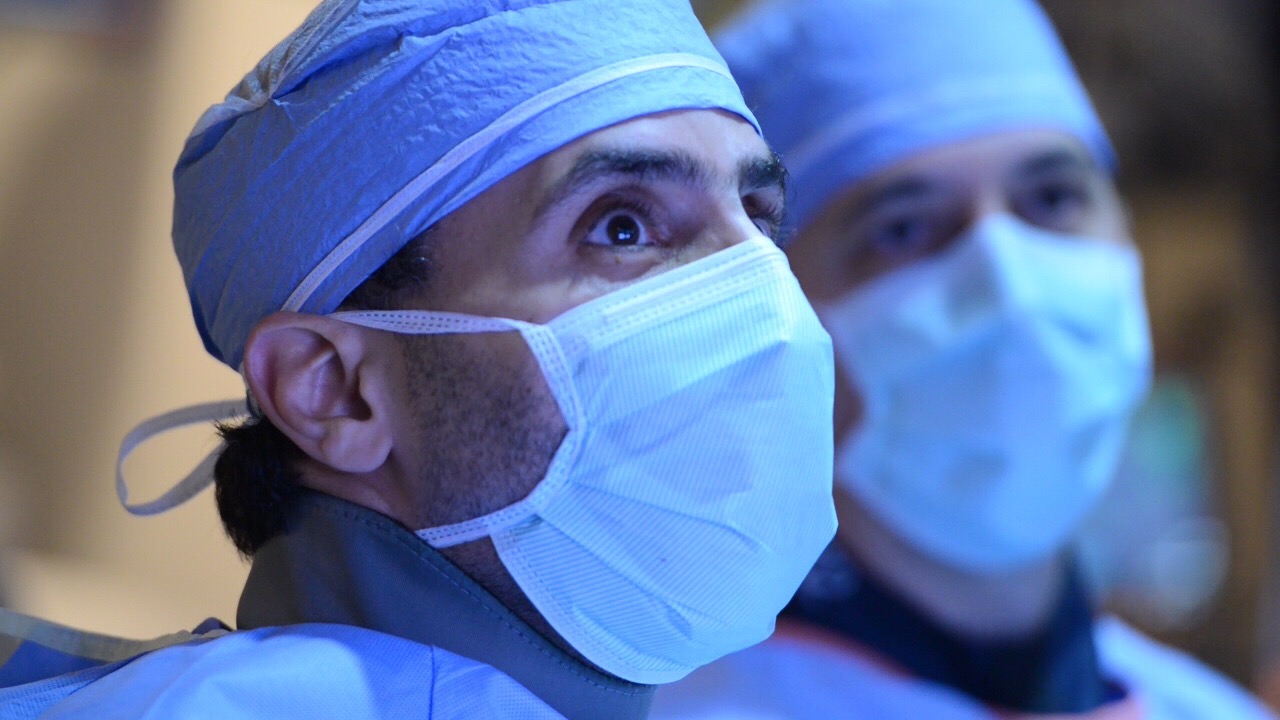Innovating New Approaches for Heart Rhythm Management

Hydrogel Advance Offers Proof of Concept for New Heart Pacing Technology
Innovators at The Texas Heart Institute at Baylor College of Medicine are always seeking ways to provide patients with new treatment options and improved quality of life. The Electrophysiology Clinical Research & Innovations (EPCRI) group is using revolutionary approaches to transform heart rhythm pacing. A new article published in the journal Biomaterials highlights their latest advance in this effort—using flexible, conductive hydrogel electrodes to pace the heart.
An incredibly talented team of engineers, led by director Mehdi Razavi, MD, a cardiac electrophysiologist and inventor, is developing new technologies to improve treatment options for patients with heart rhythm disorders. The team focuses on improving current technologies for heart rhythm management: pacemakers, which use electrical currents to help set the heart’s rhythm, and implantable cardioverter defibrillators (ICDs), which use an electrical “shock” to restore the heart’s rhythm and its ability to pump blood properly. Although lifesaving, defibrillator shocks are painful and can contribute to anxiety, depression and post-traumatic stress disorder (PTSD) in patients. The EPCRI team is particularly interested in eliminating the need for these shocks.
Dr. Razavi’s team’s latest contribution to pacing aims to prevent and manage ventricular arrhythmias, potentially life-threatening heart rhythm disorders that can cause sudden cardiac death. Over 350,000 people in the United States die from sudden cardiac death each year, with ventricular arrhythmia as the leading cause. Ventricular arrhythmia is caused by delayed electrical conduction in the heart, often due to cardiac scarring from a previous heart attack (myocardial infarction). Current options to prevent ventricular arrhythmias are limited, presenting an important unmet need for new treatment approaches.
In a collaboration with The University of Texas at Austin lab of biomaterials expert Elizabeth Cosgriff-Hernandez, PhD, the team used a novel chemical approach to create flexible, conductive hydrogel “liquid electrodes” designed to pace across damaged or scarred areas of the heart by using the heart’s venous system—essentially converting the veins into flexible electrodes running throughout the heart. By extending the reach of traditional “point” pacing leads, the new flexible electrodes can potentially pace larger areas of heart muscle, as well as previously inaccessible heart tissue.
Key findings from the new study include:
- The new polyethylene glycol (PEG)-based hydrogel chemistry is biocompatible, flexible, stable, and durable.
- Ionic species in the hydrogel provide electrical conductivity.
- Injected, rapid-curing liquid components combine to fill cardiac veins, remain in place, and reach locations in the heart that current technology cannot.
- Preclinical testing confirms that hydrogel electrodes deployed in veins provided stable electrical stimulation of the heart.
The conductive hydrogel could be precisely delivered to scarred regions of the heart to pace hard-to-reach heart tissue in the middle myocardium. Additionally, the use of cardiac veins to provide electrical stimulation offers a new way of multisite pacing that requires less energy than conventional approaches.
 Dr. Razavi emphasized the novel technology’s potential, sharing, “Since the hydrogel electrodes offer a way to pace the heart tissue using much lower energy, this breakthrough significantly helps pave the way for development of painless, imperceptible, shock-free defibrillation.” Further studies are needed to bring this promising new approach to the clinic.
Dr. Razavi emphasized the novel technology’s potential, sharing, “Since the hydrogel electrodes offer a way to pace the heart tissue using much lower energy, this breakthrough significantly helps pave the way for development of painless, imperceptible, shock-free defibrillation.” Further studies are needed to bring this promising new approach to the clinic.
Read the article:
Rodriguez-Rivera GJ, Post A, John M, Bashe D, Xu F, Larue T, Nkansah A, Wancura M, Chwatko M, Waldron C, Kalkunte N, Zoldan J, Arseneault M, Elgalad A, Rausch MK, Razavi M, Cosgriff-Hernandez E. Injectable ionic hydrogel conductors: Advancing material design to transform cardiac pacing. Biomaterials. 2025 Jun;317:123071. doi: 10.1016/j.biomaterials.2024.123071. Epub 2025 Jan 6.


